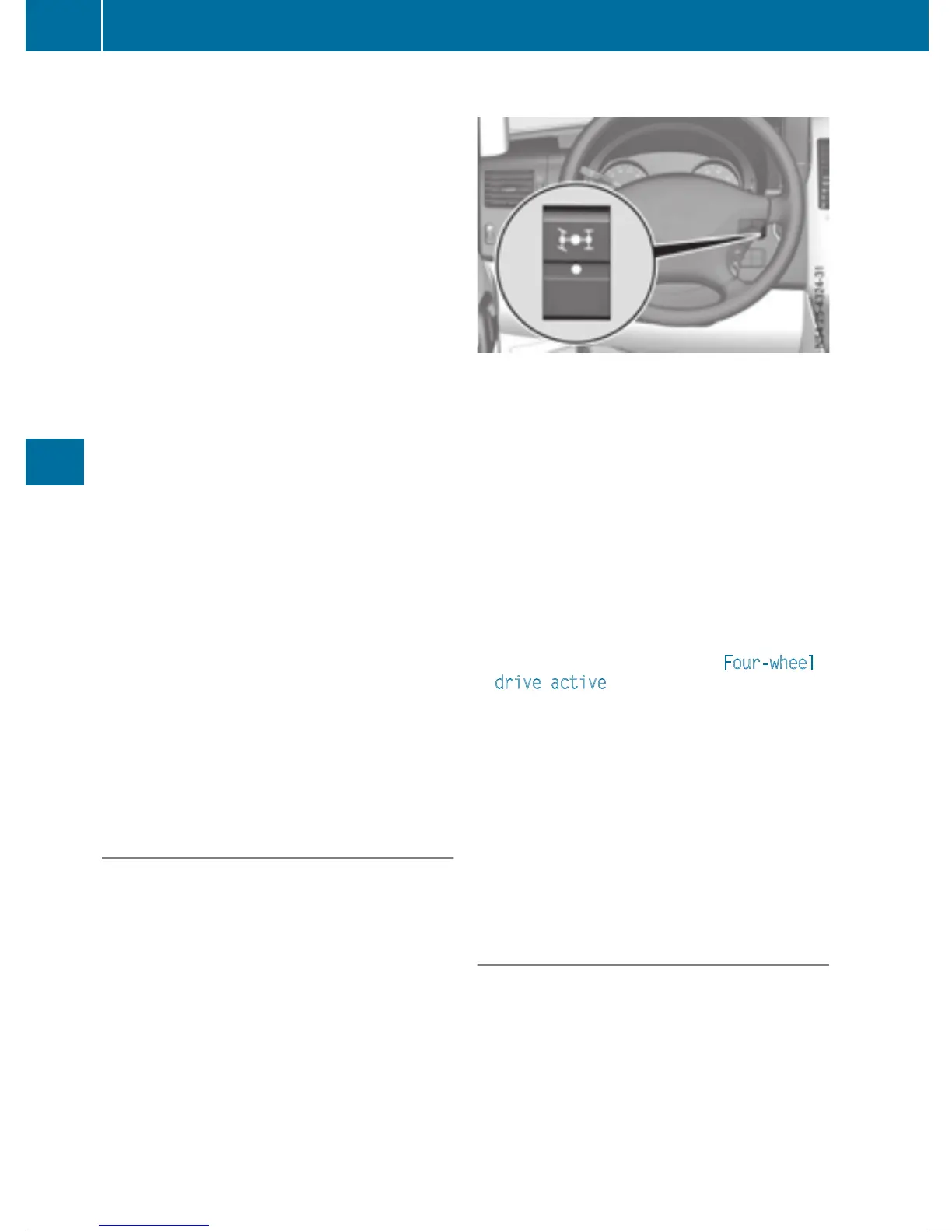remain either on the ground or be fully raised.
Observe the instructions for towing the vehi-
cle with all wheels in full contact with the
ground.
!
A function or performance test should only
be carried out on a two-axle dynamometer.
Before you operate the vehicle on such a
dynamometer, please consult a qualified
workshop. You could otherwise damage the
drive train or the brake system.
If you fail to adapt your driving style or if you are
inattentive, the all-wheel drive system can nei-
ther reduce the risk of an accident nor override
the laws of physics. The all-wheel drive system
cannot take road, weather and traffic conditions
into account. The all-wheel drive system is only
an aid. You are responsible for the distance to
the vehicle in front, for vehicle speed and for
braking in good time.
4ETS ensures permanent drive for all four
wheels, and together with ESP
®
it improves the
vehicle's traction.
If a driven wheel spins due to lack of traction:
R
When pulling away, make use of the traction
control integrated in ESP
®
. Depress the
accelerator pedal as far as necessary.
R
While driving, slowly take your foot off the
accelerator pedal
In wintry driving conditions, always use winter
tires (M+S tires) and if necessary, snow chains
(
Y page 249). This is the only way to get the full
benefit from the all-wheel drive system.
For information on "Driving off-road", see
(
Y page 137).
Engaging all-wheel drive
Conditions for engaging/disengaging
All-wheel drive can only be engaged or disen-
gaged if:
R
the engine is running
R
the vehicle is stationary
If it is not possible to engage all-wheel-drive:
R
move the selector lever to position N
R
release the brake pedal
R
press the ; button
R
move the selector lever from N to D or R
Engaging/disengaging all-wheel drive
X
To engage/disengage: press the ; but-
ton.
The indicator lamp in the ; button flashes.
The h and : indicator lamps light up in
the instrument cluster. ESP
®
and ASR are
deactivated for the duration of the engaging/
disengaging process.
If the engaging/disengaging process is suc-
cessful, the h and : indicator lamps in
the instrument cluster go out and ESP
®
and
ASR are reactivated.
If the indicator lamp in the ; button is lit,
all-wheel drive is engaged. On vehicles with
steering-wheel buttons, the display then
shows the following message: Four-wheel
drive active.
If the engaging/disengaging process fails, the
indicator lamp in the ; button flashes
three times briefly. One of the gear change
conditions was not fulfilled.
As long as the indicator lamp in the ; button
is flashing, you can cancel the engaging/disen-
gaging process by pressing the ; again.
i
If the LOW RANGE transmission ratio
(
Y page 148) is engaged, all-wheel drive can-
not be disengaged.
LOW RANGE transmission ratio
General notes
The LOW RANGE transmission ratio assists you
when driving on difficult terrain. If you engage
LOW RANGE, the engine's performance charac-
teristics and the automatic transmission's shift-
ing characteristics are adjusted accordingly.
The transmission ratio from the engine to the
wheels is around 40% lower than in the on-road
position. This increases the drive torque.
148
Driving systems
Driving and parking

